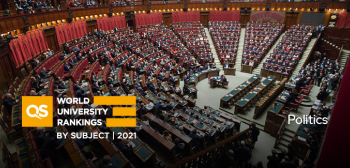圣彼得堡国立大学
About
The beginning of the University dates back to 1724 and almost three centuries thereafter, it successfully combines traditions and innovations, research and learning, experience and youth. Today Saint-Petersburg University is one of the leading international centres of science, education and culture. The discoveries and achievements of the University professors and graduates have become part of the history of both international and Russian science and technology. A number of graduates of the University were awarded Nobel Prizes - I. Pavlov (1904) and I. Mechnikov (1908) for physiology and medicine; N. Semenov (1956) for chemistry; L. Landau (1962) and A. Prokhorov (1964) for physics; V. Leontief (1973) and L. Kantorovich (1975) for economics, I. Brodsky (1985) for literature; Fields Medal - Grigory Perelman, Stanislav Smirmov, the Shaw Prize, also regarded as Nobel of the East - Ludvig Faddeev.At present Saint-Petersburg University collaborates with 230 higher education institutions from Europe, North America, Asia and South America. The major part of partner agreements falls on the universities of Germany, Korea, the USA, China, and Finland. Many important universities in Europe, America, and Asia – notably Bologna University (Italy), the Free University of Berlin and Hamburg University (Germany), Bard College and George Mason University (USA), University of Glasgow (UK), Stockholm University (Sweden), Vienna University of Economics and Business (Austria), Korea University (Republic of Korea), HEC-Paris (France) to name but a few, – have maintained various academic contacts with the University.The University has strong relations with representatives of the business community and state authorities. Among the University partners there are Mitsui, Microsoft, Russian Railways, ITARTASS, Central Electoral Management Body, Banco Santander.Saint-Petersburg University is an active member of the international academic mobility programmes such as Erasmus Mundus Action 2 (External Cooperation Window), Finnish-Russian Cross Border University, Santander Universities, European University Foundation - Campus Europae.Saint-Petersburg University is widely known for the strength of its intellectual potential. As a classical university, it carries out basic and applied research in the fields of natural and social sciences, and humanities. The University has gained impressive experience in the development and implementation of new technologies in the fields of geology, applied mathematics, biology, genetics, physics, chemistry, and software development. The high level of the University academics’ proficiency enables them to carry on a wide range of research projects for Russian and foreign companies and organizations. The top scientific priorities for the University are nanotechnology and material science, biomedicine and human health, ecology, nature rational utilization and protection, information systems and technologies.There is a number of core facilities at Saint-Petersburg University which provide modern equipment for research and education:•Interdisciplinary Resource Center for «Nanotechnology» •Research Center for analysis of the ultrastructure and molecular composition of biological objects «CHROMAS» •Center for highly productive computing (including a segment in the unified system «GRID») •Resource Center of Microscopy and Microanalysis.
About
The beginning of the University dates back to 1724 and almost three centuries thereafter, it successfully combines traditions and innovations, research and learning, experience and youth. Today Saint-Petersburg University is one of the leading international centres of science, education and culture. The discoveries and achievements of the University professors and graduates have become part of the history of both international and Russian science and technology. A number of graduates of the University were awarded Nobel Prizes - I. Pavlov (1904) and I. Mechnikov (1908) for physiology and medicine; N. Semenov (1956) for chemistry; L. Landau (1962) and A. Prokhorov (1964) for physics; V. Leontief (1973) and L. Kantorovich (1975) for economics, I. Brodsky (1985) for literature; Fields Medal - Grigory Perelman, Stanislav Smirmov, the Shaw Prize, also regarded as Nobel of the East - Ludvig Faddeev.At present Saint-Petersburg University collaborates with 230 higher education institutions from Europe, North America, Asia and South America. The major part of partner agreements falls on the universities of Germany, Korea, the USA, China, and Finland. Many important universities in Europe, America, and Asia – notably Bologna University (Italy), the Free University of Berlin and Hamburg University (Germany), Bard College and George Mason University (USA), University of Glasgow (UK), Stockholm University (Sweden), Vienna University of Economics and Business (Austria), Korea University (Republic of Korea), HEC-Paris (France) to name but a few, – have maintained various academic contacts with the University.The University has strong relations with representatives of the business community and state authorities. Among the University partners there are Mitsui, Microsoft, Russian Railways, ITARTASS, Central Electoral Management Body, Banco Santander.Saint-Petersburg University is an active member of the international academic mobility programmes such as Erasmus Mundus Action 2 (External Cooperation Window), Finnish-Russian Cross Border University, Santander Universities, European University Foundation - Campus Europae.Saint-Petersburg University is widely known for the strength of its intellectual potential. As a classical university, it carries out basic and applied research in the fields of natural and social sciences, and humanities. The University has gained impressive experience in the development and implementation of new technologies in the fields of geology, applied mathematics, biology, genetics, physics, chemistry, and software development. The high level of the University academics’ proficiency enables them to carry on a wide range of research projects for Russian and foreign companies and organizations. The top scientific priorities for the University are nanotechnology and material science, biomedicine and human health, ecology, nature rational utilization and protection, information systems and technologies.There is a number of core facilities at Saint-Petersburg University which provide modern equipment for research and education:•Interdisciplinary Resource Center for «Nanotechnology» •Research Center for analysis of the ultrastructure and molecular composition of biological objects «CHROMAS» •Center for highly productive computing (including a segment in the unified system «GRID») •Resource Center of Microscopy and Microanalysis.
University highlights
- 2012#253
- 2014#=240
- 2015#233
- 2016#=256
- 2017#258
- 2018#=240
- 2019#235
- 2020#=234
- 2021#225
- 2022#=242
- 2023#=270
- 2024#=315
- 2025#=365
- 2026#=375
Campus locations
Saint Petersburg State University,
University Embankment, 7/9, Sankt-Peterburg , Saint Petersburg , Russia , 199034
Similar Universities
Russian Institute of Theatre Arts (GITIS)
Maly Kislovskiy Lane, 6, Moscow
国家研究型大学“莫斯科动力学院”
National Research University Moscow Power Engineering Institute, Moscow
塞维诺夫第一莫斯科国立医科大学
8-2 Trubetskaya street, Moscow






























